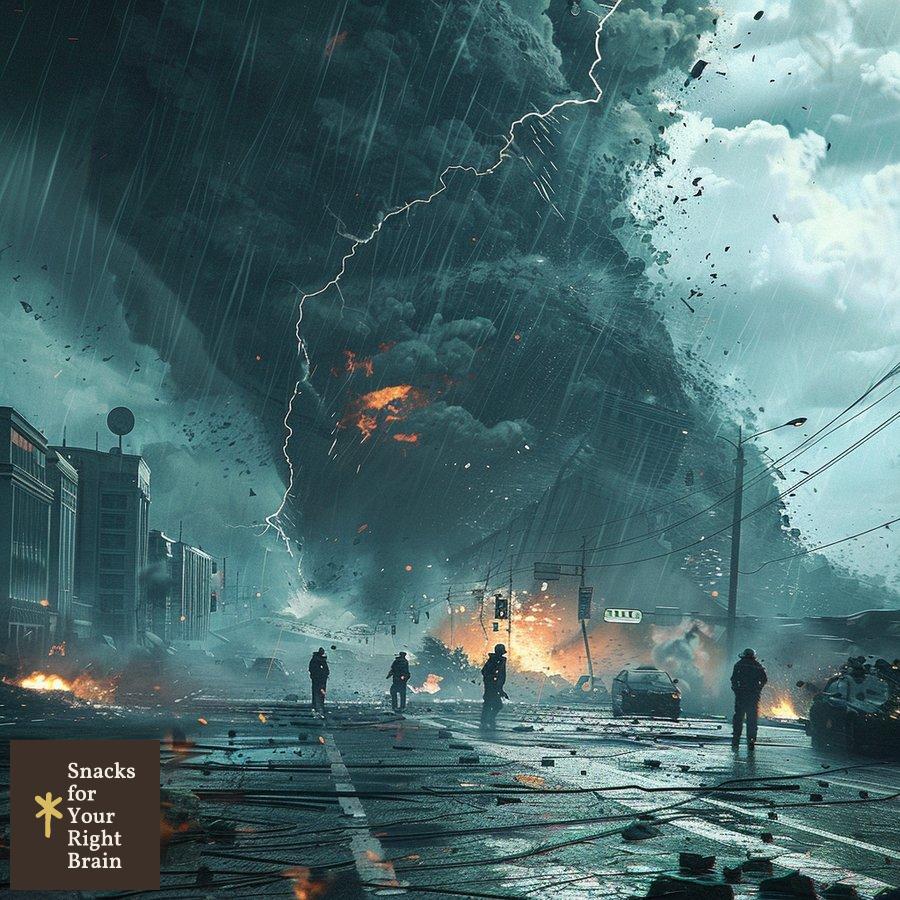Why Are Settings Important in a Short Story
What defines a setting in a short story?

A setting in a short story encompasses the time, place, and environment in which the narrative unfolds. It serves as the backdrop against which characters interact, conflicts arise, and themes are explored. The setting is not merely a passive element; it actively shapes the story’s tone and influences the characters’ actions and motivations.
Components of Setting
-
Time: This includes the historical period, time of day, and season. For instance, a story set during the Great Depression evokes a different atmosphere than one set in the modern era.
-
Place: The geographical location can range from a specific city to an abstract space. The characteristics of the environment—urban, rural, natural—play a significant role in shaping the narrative.
-
Environment: This refers to the cultural, social, and emotional context of the setting. Elements such as weather, architecture, and social norms contribute to the overall atmosphere.
The interplay between these components creates a rich tapestry that enhances the reader’s understanding of the narrative. A well-defined setting can evoke emotions, create tension, and draw readers into the world of the story.
How does setting establish mood and atmosphere?
The mood of a story refers to the emotional response it elicits from readers, while atmosphere encompasses the overall feeling created by the setting. Together, they establish the tone of the narrative, influencing how readers perceive the events and characters.
Creating Mood and Atmosphere
-
Descriptive Language: Vivid descriptions of the setting can evoke specific emotions. For example, a dark, stormy night may create feelings of suspense or fear, while a sunny meadow can evoke happiness and tranquility.
-
Sensory Details: Incorporating sights, sounds, smells, and textures immerses readers in the setting. A bustling marketplace filled with vibrant colors and sounds can create a lively atmosphere, while a quiet, desolate landscape can evoke loneliness.
-
Symbolism: Settings can symbolize broader themes or emotions. A decaying house may represent a character’s deteriorating mental state or a lost past.
Table of Mood and Atmosphere Examples
| Setting Description | Mood Created | Atmosphere Type |
|---|---|---|
| Dark, stormy night | Suspense, fear | Tense, foreboding |
| Sunny beach at sunset | Joy, nostalgia | Relaxed, serene |
| Abandoned factory | Despair, isolation | Gloomy, eerie |
| Lush forest in spring | Hope, renewal | Vibrant, uplifting |
Through these techniques, writers can effectively establish a mood and atmosphere that resonates with readers, making the story more engaging and impactful.
Why is setting important for character development?
The setting plays a pivotal role in character development by influencing characters’ behaviors, motivations, and relationships. It provides context that shapes their identities and decisions.
Influence on Characters
-
Cultural Background: The setting often reflects the cultural and social norms that shape characters. A character from a small, conservative town may exhibit different values and behaviors than one from a bustling metropolis.
-
Environmental Challenges: Characters may face specific challenges related to their setting, such as natural disasters, urban crime, or social expectations. These challenges can drive character growth and reveal their true nature.
-
Relationships: The setting can influence how characters interact with one another. For instance, characters in a close-knit community may have different dynamics than those in a more fragmented society.
Table of Character Development through Setting
| Character Trait | Setting Influence | Example Scenario |
|---|---|---|
| Introverted | Urban isolation | A character feels alone in a crowded city. |
| Adventurous | Natural wilderness | A character thrives in an open, wild landscape. |
| Conformist | Conservative town | A character struggles against societal expectations. |
By understanding the setting, readers gain insight into the characters’ motivations and conflicts, making them more relatable and authentic.
How can setting enhance plot and conflict?
The setting is integral to the plot, providing the framework within which conflicts arise and are resolved. It can introduce obstacles, create tension, and influence the story’s direction.

Enhancing Plot and Conflict
-
Conflict Creation: The setting can serve as a source of conflict. For example, a character stranded in a desolate landscape must confront both external challenges (survival) and internal struggles (fear, despair).
-
Plot Progression: Changes in the setting can propel the plot forward. A shift from a peaceful town to a war-torn environment can drastically alter the characters’ goals and motivations.
-
Symbolic Conflicts: The setting can symbolize larger conflicts. A decaying city may represent societal decline, while a thriving community can symbolize hope and resilience.
Table of Setting’s Role in Plot and Conflict
| Setting Element | Impact on Plot | Example Conflict |
|---|---|---|
| Natural disaster | Forces characters to adapt | Characters must evacuate their homes. |
| War-torn country | Drives survival instincts | Characters struggle against oppression. |
| Urban environment | Creates social tensions | Characters face prejudice and discrimination. |
Through these dynamics, the setting not only enriches the plot but also deepens the reader’s engagement with the characters’ struggles.
What role does setting play in conveying theme and symbolism?
The setting is a powerful tool for conveying themes and symbolism within a short story. It can reinforce the narrative’s central messages and provide layers of meaning.
Conveying Themes and Symbolism
-
Thematic Reinforcement: The setting can reflect the story’s themes. A tale about isolation may be set in a remote location, while a story about community may take place in a bustling neighborhood.
-
Symbolic Elements: Specific elements of the setting can symbolize broader concepts. For example, a storm may symbolize turmoil, while a calm sea may represent peace.
-
Contrast and Juxtaposition: Contrasting settings can highlight themes. A character’s journey from a bleak, industrial city to a vibrant, natural landscape can symbolize personal growth and transformation.
Table of Setting’s Role in Theme and Symbolism
| Theme | Setting Symbolism | Example Scenario |
|---|---|---|
| Isolation | Remote, desolate places | A character feels trapped in a barren landscape. |
| Hope and Renewal | Lush, vibrant nature | A character finds solace in a blooming garden. |
| Conflict and Struggle | War-torn environments | A character grapples with survival in a chaotic setting. |
Through these mechanisms, the setting becomes a vital component in conveying the story’s deeper meanings, enriching the reader’s experience.
How does setting create immersion and believability?
Creating an immersive and believable setting is essential for engaging readers. A well-crafted setting allows readers to fully enter the story’s world, enhancing their emotional connection to the narrative.
Techniques for Immersion and Believability
-
Detailed Descriptions: Providing rich, sensory details helps readers visualize the setting. Describing the sights, sounds, and smells of a bustling market can transport readers into that environment.
-
Consistency: Maintaining consistency in the setting’s characteristics ensures believability. If a character suddenly behaves differently based on an inconsistent setting, it can disrupt the reader’s immersion.
-
Authenticity: Researching and accurately portraying real-world settings adds credibility. Whether it’s a historical period or a specific location, authenticity fosters trust between the writer and reader.
Table of Techniques for Immersion and Believability
| Technique | Description | Impact on Reader |
|---|---|---|
| Sensory Details | Vivid descriptions of sights, sounds, and smells | Enhances visualization and connection. |
| Consistency | Maintaining setting characteristics | Builds trust and immersion. |
| Authenticity | Accurate portrayal of real-world elements | Increases believability and engagement. |
By employing these techniques, writers can create settings that draw readers in, making the story more compelling and memorable.
In what ways does setting affect pacing and structure?
The setting significantly influences the pacing and structure of a short story. It can dictate the rhythm of the narrative and the unfolding of events.
Impact on Pacing and Structure

-
Scene Changes: Shifts in setting can signal changes in pacing. A rapid transition from one location to another may quicken the pace, while lingering in a specific setting can slow it down, allowing for deeper exploration.
-
Time Manipulation: The setting can manipulate time perception. A character’s experience in a timeless, idyllic setting may feel slower, while chaotic environments can create a sense of urgency.
-
Structural Choices: The structure of the story can be influenced by the setting. For example, a story that unfolds in a single location may have a different pacing and flow than one that spans multiple settings.
Table of Setting’s Impact on Pacing and Structure
| Setting Element | Effect on Pacing | Example Scenario |
|---|---|---|
| Rapid scene changes | Quickens pace | Characters travel through various locations in quick succession. |
| Extended stay in one location | Slows down pace | A character reflects on their life in a familiar setting. |
| Chaotic environments | Creates urgency | A character must escape a collapsing building. |
Through these dynamics, the setting not only shapes the narrative’s flow but also enhances the reader’s engagement with the story.
Why is cultural and historical context important in settings?
Cultural and historical context enriches the setting, providing depth and relevance to the narrative. Understanding these contexts allows readers to appreciate the story’s nuances and implications.
Importance of Cultural and Historical Context
-
Cultural Significance: The setting often reflects the values, beliefs, and traditions of a specific culture. This context can inform character motivations and conflicts, making the story more relatable and authentic.
-
Historical Relevance: Historical settings can influence the characters’ experiences and the plot’s direction. A story set during a significant historical event can provide insight into the societal challenges and triumphs of that time.
-
Reader Connection: Readers familiar with the cultural or historical context may find deeper meaning in the narrative. This connection fosters empathy and understanding, enhancing the overall reading experience.
Table of Cultural and Historical Context in Settings
| Context Type | Impact on Setting | Example Scenario |
|---|---|---|
| Cultural norms | Shapes character behavior | A character’s actions reflect societal expectations. |
| Historical events | Influences plot and conflict | A character navigates life during the Civil Rights Movement. |
| Regional characteristics | Adds authenticity | A story set in the Appalachian Mountains reflects local traditions. |
By incorporating cultural and historical contexts, writers can create settings that resonate with readers, enriching their understanding of the narrative.
How do effective settings impact the reader’s experience?
Effective settings significantly enhance the reader’s experience by creating a vivid, immersive world that resonates emotionally. A well-crafted setting can evoke feelings, provoke thoughts, and deepen engagement with the narrative.
Impact on Reader’s Experience
-
Emotional Resonance: A relatable setting can evoke strong emotions. Readers may feel nostalgia, fear, or joy based on their own experiences with similar environments.
-
Enhanced Engagement: A compelling setting draws readers into the story, making them feel like active participants rather than passive observers. This engagement fosters a deeper connection to the characters and plot.
-
Memorable Impressions: Unique or well-developed settings can leave a lasting impression on readers. They may remember the story long after finishing it, influenced by the vivid imagery and atmosphere.
Table of Effective Settings’ Impact on Reader’s Experience
| Impact Type | Description | Example Scenario |
|---|---|---|
| Emotional Resonance | Evokes strong feelings | A character’s loss in a familiar setting triggers reader empathy. |
| Enhanced Engagement | Draws readers into the story | Readers feel present in a bustling cityscape. |
| Memorable Impressions | Leaves lasting impressions | A vividly described fantasy world captivates the reader’s imagination. |
Through these dynamics, effective settings not only enrich the narrative but also elevate the reader’s overall experience.
What techniques can writers use to craft compelling settings?

Crafting compelling settings requires careful consideration and creativity. Writers can employ various techniques to create immersive and engaging environments.
Techniques for Crafting Settings
-
Research: Gathering information about specific locations, cultures, or historical periods enhances authenticity. This research can inform details that make the setting believable and relatable.
-
Sensory Details: Incorporating sensory descriptions—sights, sounds, smells, tastes, and textures—immerses readers in the setting. This attention to detail helps create a vivid picture in the reader’s mind.
-
Character Interaction: Showcasing how characters interact with their environment adds depth to the setting. Their responses to the setting can reveal their personalities and motivations.
-
Symbolism and Metaphor: Using symbolic elements within the setting can add layers of meaning. A setting that changes with the character’s emotional state can enhance the narrative’s themes.
Table of Techniques for Crafting Compelling Settings
| Technique | Description | Impact on Narrative |
|---|---|---|
| Research | Gathering information | Enhances authenticity and believability. |
| Sensory Details | Incorporating sensory descriptions | Creates vivid imagery and immersion. |
| Character Interaction | Showing character responses to the setting | Reveals character traits and motivations. |
| Symbolism and Metaphor | Using symbolic elements | Adds thematic depth and resonance. |
By employing these techniques, writers can create settings that captivate readers, enhancing their connection to the story and its characters.
In conclusion, the significance of setting in short stories cannot be overstated. It serves as a foundation for mood, character development, plot progression, and thematic exploration. By understanding and effectively utilizing the elements of setting, writers can craft engaging narratives that resonate deeply with readers.






